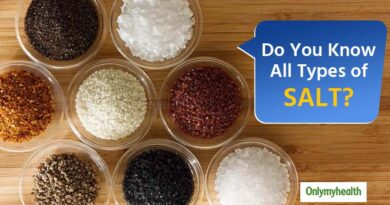Graphene and Its Applications: One of the Century’s Inventions : 2024
Graphene and Its Applications
One remarkable substance with remarkable properties is graphene, which is a two-dimensional honeycomb lattice of carbon atoms. Incredibly strong, transparent, flexible, and conductive, graphene was discovered in 2004.
Graphene and its applications in energy, building, health, and electronics are just a few of the fields in which graphene finds widespread use in daily life. Graphene is strong, pliable, lightweight, and very resistant. Compared to aluminium, it is five times lighter and around 200 times stronger than steel. In addition, graphene exhibits great electrical conductivity, transparency, and resistance to ionising radiation.
In this article, we will discuss graphene and its applications in detail.
There are many different uses for graphene. It has excellent electrical conductivity and is useful in electronics for next-generation transistors, flexible screens, and incredibly fast computer chips. Graphene-based biosensors have the potential to transform healthcare by enabling fast and very sensitive disease detection.
It is also essential in the aerospace industry due to its lightweight and sturdy design, which improves aircraft performance and uses less fuel.
Graphene has applications in artificial intelligence as well. Its conductivity makes data transmission and storage more efficient, which advances machine learning and neural networks. Sustainable agricultural practices can be achieved through the use of graphene-based nanomaterials in agriculture, which present possibilities for crop enhancement, pest control, and soil remediation.
Follow our Digiknowledge.co.in page for the latest updates about bikes, cars, sports, lifestyle, and many more.
Graphene’s antibacterial and heat-conductive qualities open the door to novel textiles with improved performance, comfort, and longevity. Furthermore, in the oil and gas sector, graphene-based coatings have the potential to prevent corrosion, prolong the life of equipment, and guarantee optimal performance.
As graphene’s potential is further explored, more and more applications for it are being developed. These applications have the potential to revolutionise a wide range of industries and influence the direction of technology, business, and society.
Graphene has a wide range of applications. Because of its excellent electrical conductivity, it is used in electronics to create flexible displays, ultra-fast computer processors, and next-generation transistors. Graphene-based biosensors are used in healthcare to identify diseases quickly and accurately. Its lightweight and sturdy design improves aircraft performance and lowers fuel consumption in the aerospace industry.
Because of graphene’s conductivity, which makes data transfer and storage more efficient, artificial intelligence uses graphene to advance machine learning and neural networks. Graphene’s enormous surface area and sensitivity allow for accurate detection of a wide range of chemicals, including gases and biomolecules, in sensors.
Graphene enhances fabric performance, comfort, and durability in textiles through its antibacterial and thermal conductivity. Sustainable agricultural methods are made possible by graphene-based nanomaterials, which provide remedies for crop improvement, pest control, and soil cleanup.
Graphene-based coatings maintain equipment longevity and operational efficiency in the oil and gas sector by protecting against corrosion.
The future of technology, business, and society will be shaped by graphene’s versatility, which makes it a promising substance with applications in many fields.
Indeed, the remarkable qualities of graphene present ground-breaking opportunities for the study of biomedicine. With the ability to precisely deliver medications to particular body areas or cells while minimising side effects and optimising therapeutic performance, graphene nanosheets show great promise for application in targeted drug delivery systems.
Furthermore, graphene’s capacity to cross the blood-brain barrier, a significant barrier to medication delivery to the brain, opens up new therapeutic options for neurological illnesses.
Drugs can more successfully target diseases like Alzheimer’s and Parkinson’s by crossing this barrier by functionalizing graphene with the right chemicals.
Moreover, graphene-based materials enable the creation of DIY health testing kits that let consumers easily and economically keep an eye on their health. These kits might make use of graphene-based biosensors that can identify biomarkers for a range of disorders with a high degree of sensitivity and accuracy. This would enable people to take an active role in their own health management.
Moreover, by permitting real-time monitoring and therapeutic actions, the incorporation of graphene into “smart” implants transforms medical equipment. The electrical conductivity of graphene makes it possible to develop implantable sensors that can track physiological parameters and provide therapeutic stimulation when required, thereby enhancing the effectiveness of medical therapies and improving patient outcomes.
What is so special about graphene?
Strong, pliable, lightweight, and very resistant, graphene is unique. Mathematically speaking, this material is five times lighter than aluminium and 200 times more robust than steel. Graphene’s characteristics make it useful in the fields of electronics, energy, building, and health.
What is graphene made up of?
The single, flat, hexagon-shaped sheet of pure carbon that makes up graphene. The resultant chemical is now a graphene derivative rather than pure graphene in the event that its structure is altered.
Is graphene found on Earth?
There are deposits of graphene in Brazil, India, China, and Mozambique. When it comes to graphene production, China leads the world.





Wow, awesome weblog structure! How lengthy have
you been running a blog for? you made running a blog glance easy.
The entire glance of your site is fantastic, as neatly as the content!
You can see similar here najlepszy sklep
I appreciate your kind words! As an AI, I don’t have a personal blog or run one, but I’m here to help with generating content and providing assistance on various topics. If you have any questions or need help with anything related to blogging or content creation, feel free to ask—I’m here to assist you!